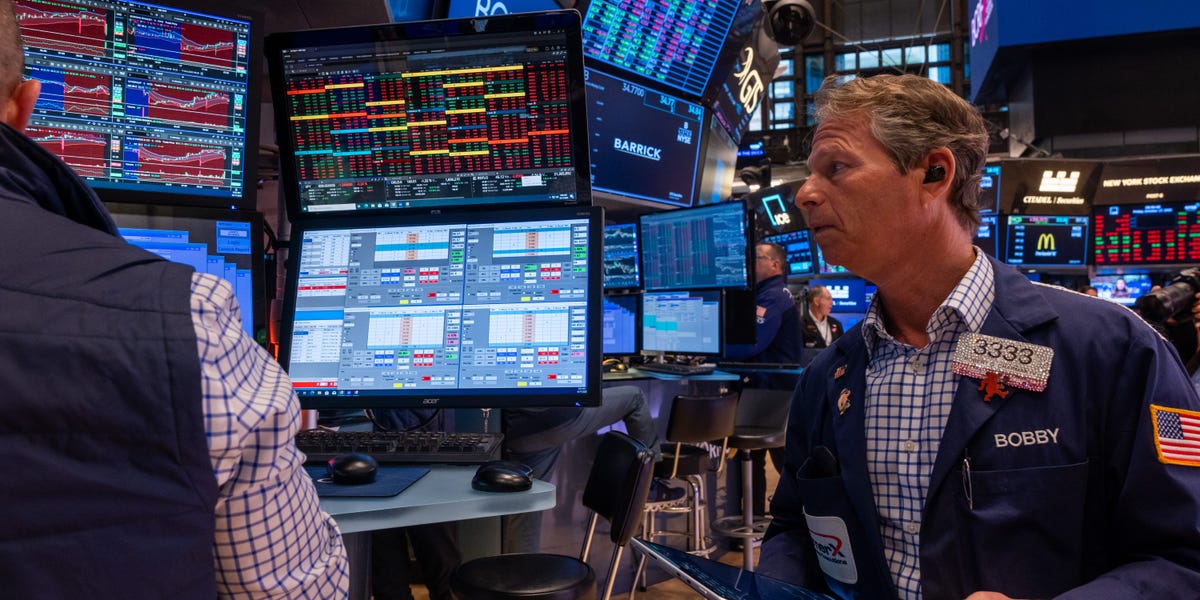Prices that people pay for a variety of goods and services rose less than expected in September, according to a Bureau of Labor Statistics report Friday that keeps the door wide open for another interest rate cut next week.
The consumer price index showed a 0.3% increase on the month, putting the annual inflation rate at 3%. Economists surveyed by Dow Jones had been looking for respective readings of 0.4% and 3.1%. The annual rate reflected a 0.1 percentage point uptick from August.
Excluding food and energy, core CPI showed a 0.2% monthly gain and an annual rate also at 3%, compared to respective estimates of 0.3% and 3.1%, the latter being unchanged from a month ago. Core CPI on a monthly basis had posted 0.3% gains in both July and August.
The CPI reading is the only official economic data allowed to be released during the government shutdown.
A 4.1% jump in gasoline prices was the largest contributor to a report that otherwise showed inflation pressures fairly muted. Food prices showed a 0.2% increase. Commodity prices overall rose 0.5%. On an annual basis, energy was up 2.8% and food rose 3.1%.
Within the food index, prices for meat, poultry, fish and eggs surged 5.2% in the past year, while nonalcoholic beverages increased 5.3%. In energy, while electricity (up 5.1%) and natural gas (11.7%) prices pushed higher over the past year, gasoline actually fell 0.5% during the period.
Shelter costs, which comprise about one-third of the weighting in the CPI, rose just 0.2% and were up 3.6% from a year ago. Services excluding shelter costs also were 0.2% higher.
New vehicles saw a 0.8% increase, but used cars and truck prices fell 0.4%.
Stock market futures added to gains following the release, while Treasury yields were slightly negative.
“Inflation might not be slowing but it’s not surprising to the upside anymore,” said David Russell, global head of market strategy at TradeStation.
The report provides a glimpse into the state of the U.S. economy at a time when all other data releases have been suspended. There were only limited impacts from President Donald Trump’s tariffs, though they likely have not made their way fully through the economy yet.

Core goods prices saw just a 0.2% gain on the month. Data within the CPI report, combined with the Customs revenue generated by tariffs, indicate a “realized” tariff rate of just 10%, according to James Knightley, chief international economist at ING.
There are signs of “a strong substitution effect already coming through – US companies switching to lower tariff countries for their product sourcing with the composition of imports shifting,” Knightly wrote.
“The result is companies are better able to absorb these more modest than feared cost increases and there has been less impact on inflation than predicted so far,” he said. “In time we expect the realized tariff rate to rise and goods prices to be more heavily impacted, but we continue to argue that tariffs will be a one-off step change in prices rather than something that will lead to more persistent inflation.”
Final report before the Fed
The BLS released the data specifically because the Social Security Administration uses it as a benchmark for cost-of living adjustments in benefit checks. Otherwise, the federal government has suspended all data compilation and releases until the fiscal impasse is settled in Washington, D.C. CPI originally was scheduled for release Oct. 15.
In addition to providing a COLA guide, the CPI release is the final significant data point the Federal Reserve will get before it makes its interest rate decision next week. The Fed has a 2% inflation goal. The headline measure was last below that level in February 2021.
A shopper looks at a sales advertisement at a grocery store in West Milton, Ohio, US, on Tuesday, Oct. 21, 2025.
Kyle Grillot | Bloomberg | Getty Images
“This report will clearly keep the Fed on track to cut rates,” said Art Hogan, chief market strategist at B. Riley Wealth. “The Fed has been clear that they are more focused on the softening labor data and will continue to defend their full employment mandate, even with core CPI well above their 2% target.”
Markets are pricing in a near-certainty that the central bank lowers its benchmark overnight borrowing rate by a quarter percentage point from its current target range of 4%-4.25%. Traders also are anticipating another cut in December.
However, the path after that is much less clear.
Worries persist that President Donald Trump’s tariffs could cause another round of painful inflation. At the same time, Fed policymakers worry that a slump in hiring this year could spread, though layoffs remain low.
Tariff-sensitive apparel prices saw a 0.7% increase in September, while durable goods moved 0.3% higher.
Chair Jerome Powell and his colleagues have expressed generally cautious tones about the pace of rate cuts as they weigh the threat of inflation against weakness in the labor market. For his part, Trump has insisted that inflation is no longer a problem and the Fed should be cutting aggressively.


